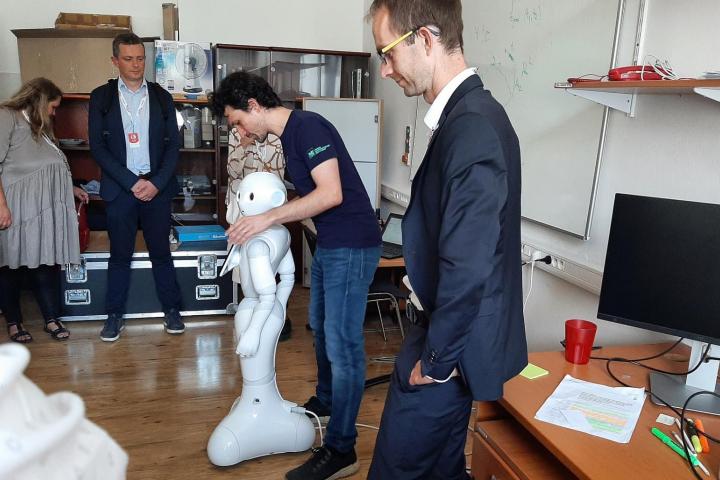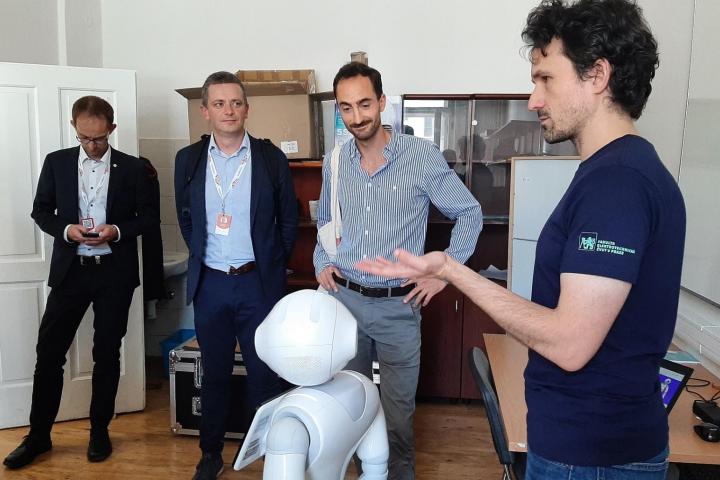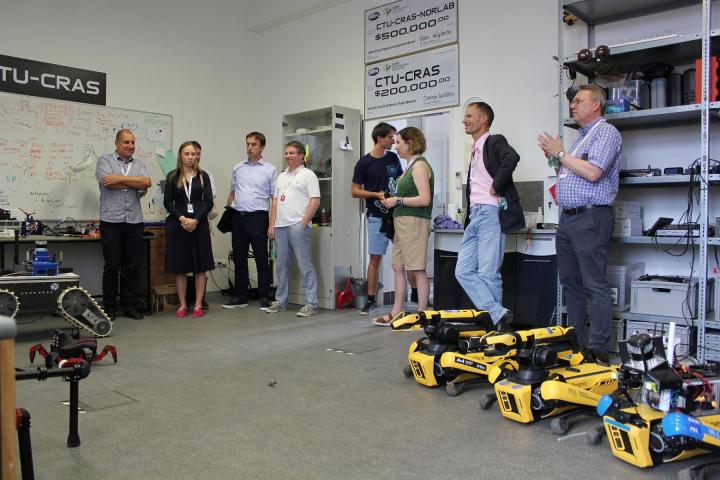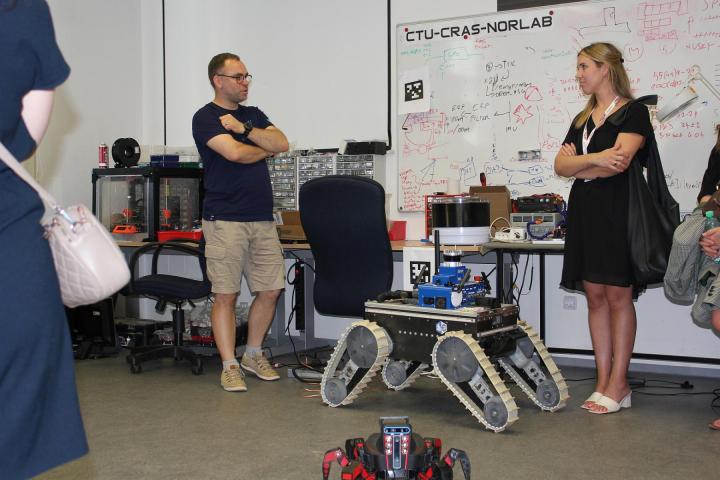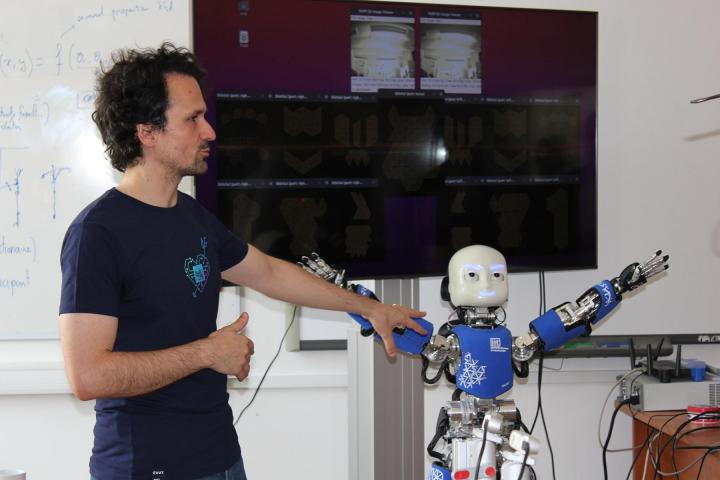
"Our workplace performs tasks of basic research, the results of which in the coming years will contribute to safer and more effective involvement of robots in diverse work activities and industry, but also to their expansion into everyday life," said Prof. Tomáš Svoboda, head of the Department of Robotics at the Faculty of Electrical Engineering and the CTU-CRAS robotics team. It is also characteristic of the faculty that it involves students of computer science and cybernetics in research work unusually early, often already at the undergraduate level.
Computer scientists in the field of robotics from CTU in Prague have been achieving excellent results for a long time and rank among the leading European workplaces. Their research includes autonomous movement, machine learning, multi-robot cooperation, human-robot communication and modelling of signal propagation in confined spaces.
Four robotics teams at the Departments of Cybernetics and Computers of FEL CTU
In the line-up of robotic systems, which is currently unmatched in the Czech Republic in terms of its complexity and technological maturity, stand out four-legged, wheeled and tracked robots, which last year participated in the final round of the DARPA Subterranean Challenge, an unofficial "robot Olympics" in Kentucky, USA. For the general public, the best known is the four-legged walking robot SPOT from Boston Dynamics. The existing two have recently been joined by two new SPOTs with a robotic arm that significantly expands the possibilities for research into autonomous manipulation without human supervision. This area is one of the least explored in current robotics.
DARPA's robotics team also includes autonomously controlled drones, which demonstrated autonomous flight capabilities to the Brussels diplomats, both alone and in swarms. Over the past year, the Multirobotic Systems Group has made significant progress in developing software for their autonomous deployment in a variety of tasks, including mapping historically valuable interiors, fighting fires in high-rise buildings, rescuing people, inspecting power lines and capturing hostile drones.
The scientific investigations of the humanoid robotics group are based on current knowledge in psychology and neuroscience that work directly with humans. Its researchers are developing algorithms that open up new ways of understanding the human brain through artificial intelligence. They are applying them to human-like humanoid robots with electronic skin. The most realistic imitation of human skin to date is the iCub, the first robot that can be said to have tactile senses as well as sight and hearing.
The last workplace visited by the digital attachés is the computational robotics laboratory. Researchers here are developing software for six-legged walking robots, such as SCARAB II, which enables tactile perception of the environment, thus providing safer movement capabilities and interaction in environments with moving people. Researchers will present a new method of robot-human interaction being developed at CTU in which the robot can estimate the intensity and direction of a touch or stimulus and obediently head in the desired direction.
